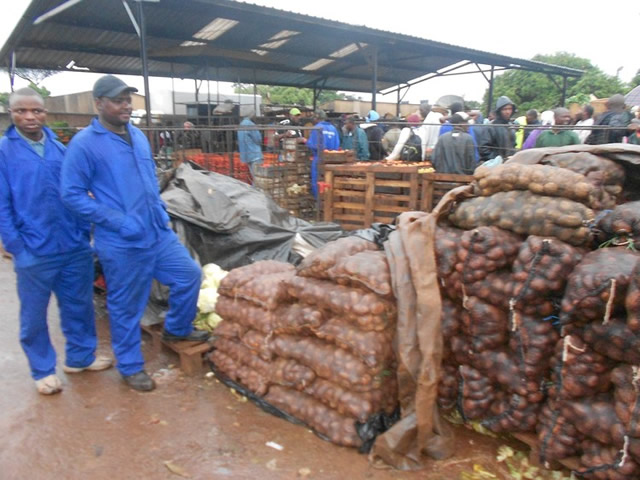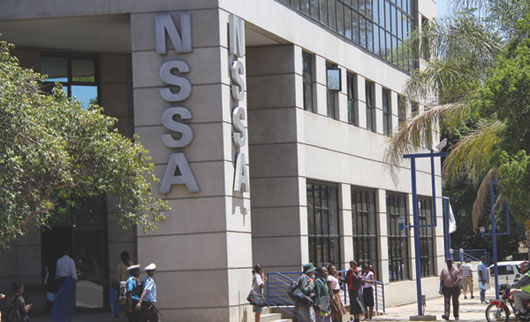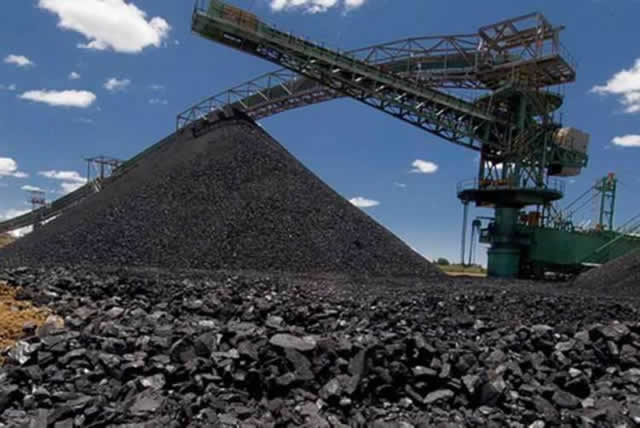Trends from informal agric markets

Charles Dhewa
As if to confirm that crowds can make better predictions than experts, people’s agricultural markets like Mbare in Harare and Malaleni in Bulawayo are shedding more light on how farmers and other actors are responding to the El Nino-induced drought in Zimbabwe. Following reduced rainfall in December 2015 and January 2016, there has been reduced planting of tomatoes particularly in Mutoko where tomatoes are planted often in the open field. This has seen tomato prices in Mbare market shooting to a maximum of $8 per 8kg wooden box from the normal $3-$4 as of April 29, 2016.
However, farmers who planted tomatoes and other horticultural crops with late January, February and March rains are expecting good quality products. On the other hand, due to unpredictable weather forecasting, farmers have been caught off-guard by late rains that came in March and April which have triggered fungal diseases such as blight as well as fruit rot. This has also resulted in tomato shortages in the market, driving up prices.
To satisfy demand, some traders have started importing tomatoes from South Africa. Local production of cabbages and cucumbers has also been negatively affected by the El Nino, leading to reduced planting. Regarding onions, it looks like there have been fewer farmers willing to commit resources due to lack of capital and other challenges. Usually the bulky of the onions in Zimbabwe come from commercial and peri-urban farmers with reliable water supply. The crop is mainly produced in winter (May up to August). Most communal farmers do not venture into onions due to competition for little available water between necessity crops like tomatoes and leafy vegetables as well as livestock. In most communal areas water sources start drying up end of July and August. That is why most communal gardens tend to be very small to accommodate small and fewer plants.
While Zimbabwe has better quality tomatoes, when traders import to fill a need, quality is not a priority consideration but quantity. South African tomatoes also do not taste as good as Zimbabwean ones. Taste is influenced so much by fertiliser and agronomic practices. Tomatoes that are grown with manure tend to taste better than those grown with basal fertilisers.
Water situation and
market implications
As a result of the El Nino phenomenon, much of Zimbabwe received below normal rainfall this season. This has translated to low replenishment of the water table, rivers and dams. For instance, most farmers in Mazowe district who often receive 900-100mm of rain per year ended the season at around 500mm. There is going to be too much reliance on dams that have received some significant in-flow for irrigation, livestock and human consumption. As a result, acute shortages of commodities in the market are expected from September 2016 to February 2017.
These shortages will be more notable in tomatoes and leafy vegetables while cabbage supply will be normal until August. September will see severe shortage of cabbages because leafy vegetables which often fill the demand gap will start dwindling as water sources such as weirs and wells run dry in most production areas such as Mutoko, Murewa and Uzumba Maramba Pfungwe.
Potato story
At least 80 percent of potato production in Zimbabwe is said to be in the hands of a few remaining white commercial farmers who also control potato seed. This year production was done properly but the commodity remains expensive on the market due to a number of factors. For the past seasons, producers used to make money on volume since they achieved yields as high as 60 – 80 tonnes/ha based on superior potato seed. This would translate to at least 4 000 pockets @ $5/pocket = $20 000. Subtracting $9 000 cost of production ensured a farmer $11 000 as income. Maintaining previous higher yields has been a problem this year with some farmers down to 30–40 tonnes per hectare. This has cut down on the original profit on volume.
A cartel which seats down to set potato prices has gazetted the cost as follows: $10/pocket large; $8/pocket medium and $7/pocket small. Since consumers had become used to $5/pocket which also ensured the producer made profit on volume, an increase in the price has resulted in consumer resistance.
As they consider other substitutes, consumers are wondering why the potato has suddenly become so expensive. More so, potato is neither a staple food nor a necessity. The majority of consumers still consider it a luxury. As if that is not bad enough, the situation has coincided with liquidity challenges. Due to lack of capital, traders who often go out to fetch potatoes from farms are closely watching the situation with the hope of acting when producers reduce prices.
Consumers have a way of ranking their needs and potatoes may rank far much lower than school fees and tomatoes, among other needs. This means potatoes face an uncertain performance this season. On the other hand, necessities such as tomatoes, cabbages, onions and leafy vegetables will continue draining surplus cash that would normally go to potatoes.
Another development is that rice is becoming cheaper and a good companion for tomatoes. In fact, rice is driving the demand for tomatoes. Consumers find it convenient to prepare rice with tomato soup, producing a solid meal on its own. That also means they can do without potatoes. A key lesson from the potato story is that a sudden market shock creates consumer resistance.
Role of capital and
domestic money supply
Although failure to produce due to lack of water negatively affects capital rebuilding, farmers with capital and water are responding relatively well to the drought. However, domestic money supply and poor circulation of money into horticulture are becoming critical issues. Late opening of tobacco auction floors have affected domestic money supply into the horticulture sector. Normally auction floors open in February but this year they opened in March. Usually many tobacco farmers invest in horticulture just after selling their tobacco.
This year since they are not accessing their cash easily, they are deferring winter horticulture activities. If a farmer who used to get $10 000 at once from the tobacco auction floor can only access $500 via a bank, s/he will not have enough to inject into horticulture at once. Tobacco income used to cause gluts of cabbages in September and October when tobacco farmers will have engaged in horticulture in April/May following early tobacco marketing. The fact that this year tobacco farmers are constrained on cash will also contribute to huge shortages in horticulture commodities in the market. This effect is already being felt.
How farmers in dry
areas can play the game
Provided they have water, farmers in hot areas such as Gokwe, Muzarabani, Masvingo, Binga, Guruve, Mwenezi, Mukumbura and Nkayi could make money through winter horticulture production. These areas are not affected by frost or excessive cold. They should aim to produce commodities like okra, tomatoes, cucumbers, butternuts and fine beans which are currently on demand in the market and are likely to be more scarce as the season progresses. All these can be planted in winter beginning May for hitting the market in August/September.
A farmer can plant 500 – 1000 tomato plants at a cost of 50c – 56c per plant. While this is a commercial cost of production which covers labour and electricity, for communal farmers who use their own labour, the cost can be as low as 35c/plant. If you plant properly, 500 tomato plants can give you $500. Minus $175 cost of production, a household can remain with $325 which is enough to feed the family for many months.
If a farmer plants a good tomato variety, 200 plants can give him/her 66 boxes. From 66 boxes, at a modest price of $5/box, a farmer can earn $330, enabling a household of six to survive on approximately $40/months for many months.
Some traders are funding okra and green mealies production in Muzarabani. Green mealies also come from Middle Sabi areas like Chisumbanje all the way to Harare, Bulawayo and Gweru markets. Two remote and dry areas which supply green mealies to major urban markets in large quantities when every other area does not have the commodity are Muzarabani and Chisumbanje. There is no reason why smallholder farmers in these areas cannot earn more from green mealies and other winter crops.
Charles Dhewa is a proactive knowledge management specialist and Chief Executive Officer of Knowledge Transfer Africa (Pvt) (www.knowledgetransafrica.com ) whose flagship eMKambo (www.emkambo.co.zw ) has a presence in more than 20 agricultural markets in Zimbabwe. He can be contacted on: [email protected] ; Mobile: +263 774 430 309 / 772 137 717/ 712 737 430.










Comments